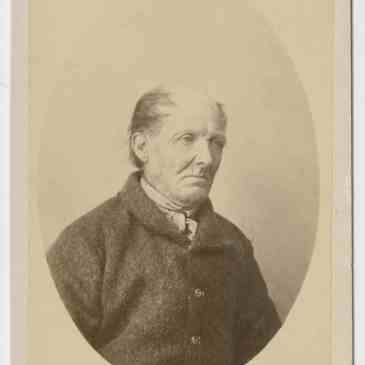MOTTO of the ROYAL SCOTS
“Nemo me impune Lacessit”. “No-one touches me with impunity” (or “Dinna mess wi’ me!”)
“DEATH OF AN OLD VETERAN.- There passed away very quietly on Sunday, 9th inst., at the good old age of 79, Mr. John Nevin, who for the last 30 years has lived in the secluded shades of Kangaroo Valley, adjoining Lady Franklin’s old Museum. He lived a retired life on his pension and in working his plot of garden ground at the Wesleyan Chapel, enjoying the respect of all in the neighbourhood as a consistent Christian. His latter days were spent in quietness among his family, and he leaves a widow (a second wife) and two sons and several grandchildren in Hobart. Only a fortnight ago two friends of his, who were boys in the Royals, and had known him in Canada 50 years ago, paid him a visit, and a pleasant time was spent with him in recounting feats of valour long since almost forgotten. He was then enjoying good health, but last Wednesday, while working in his garden, he felt tired, and rested awhile on the damp ground, which caused a chill. He took to his bed, and, after three days’ sickness, quietly joined the majority. In his day he was a wielder of the pen as well as of the sword, and was some 50 years ago a contributor to the infant Press in London, Canada West, when the present city of that name was a struggling town of rough and rude buildings and log huts. As a soldier of the Royal Scots he served under his colonel, Sir G.A. Wetherall, and the present Sir Daniel Lyons [i.e. Lysons] was his ensign; and he did his duty in very stirring times in the Canadian Rebellion of 1837-1838. He was engaged in the storming and capture of St.Charles and St. Eustache and in engagements of St. Dennis, St. Benoit, and many other operations on the Richelieu River and adjacent country of Chambly, and at Terra-Bone [i.e. Terrebonne] he assisted in the capture of a large number of French prisoners during a severe winter campaign, often struggling with his comrades to the waist in snow in following his officers in the work of quelling the rebellion of Papineau. John Nevin’s proudest boast was that he had been a soldier of the Royals.” (The Mercury, 11 October 1887). … More John Nevin in the Royal Scots at the Canadian Rebellion 1837-38






































You must be logged in to post a comment.